2005 Sejong Music Composition Competition
Winners
Some winning pieces may be found in our Music Competition Repertoire Book. Please check our Music Competition repertoire page for more details.
| First Place | Jean Ahn (안진) San Fransico, CA, USA Nil-Lili for piano solo |
|---|---|
| Jeongkyu Park (박정규) Incheon, South Korea Toad for violin and piano |
|
| Second Place | none |
| Third Place | Sung Joo Hong (홍성주) San Diego, CA, USA Bell Flower for piano solo |
| Honorable Mention | David Evan Jones Santa Cruz, CA, USA Eemulnori for violin and piano |
| Soonmee Kahng (강순미) Seoul, South Korea Petite Suite for cello solo |
|
| Dae-Sung Kim (김대성) Seoul, South Korea Chang-gu Nori for piano solo |
| Special Recognition These pieces were additionally selected to be used for the Sejong Music Competition. |
|---|
| Eugene Cha (Baltimore, MD, USA) Chaos based on Sae-Ta-Ryung (piano senior division) |
| Hyun Kyung Kim (Baltimore, MD, USA) Blue Bird (piano junior division) |
| David Schober (New York, NY, USA) Fugue after the Korean National Anthem (piano junior division) |
| Hyo Jong Kim (Seoul, South Korea) Sopoong (violin senior division) |
| Rhee Haun (Wichita, KS, USA) Dorajie (violin junior division) |
| Dong-Ji Moon (Temple University, Philadelphia, PA, USA) Hae-ga San Ma-loo-eh Ju-mool-uh-do (violin junior division) |
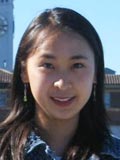
Jean Ahn is a 4th year Ph.D. student at UC Berkeley. She was born in Korea and received her B.A. and M.A. at the Seoul National University.
Recent awards include the De Lorenzo Prize and a fellowship to Aspen Music Festival. As a two time recipient of Korean Traditional Music Festival Award, she has also written many pieces for Korean and other eastern asian traditional instruments. Her music for Koto and electronics has been played in CNMAT (Berkeley) and CCRMA (Stanford) concerts.
"Nil-Lili" for solo piano. Using the theme of Korean tune "Nil-Ni-Ria", this music extends the piece by juxtaposing chromatic scales or pentatonic clusters. The piece has the joyful lightness of the original tune which is one of the most popular folk songs from Kyung-gi Province.
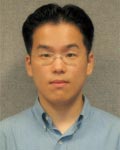
Jeongkyu Park was born in Seoul in 1981. He graduated from the Korean National University of Arts (KNUA). He is currently studying with Prof. Sung Ho Hwang, Dr. F. Dliciano, and Byung Eun Yoo at the graduate school of KNUA.
He won the first prize at the Dong-a music competition in 2003. His music has been performed in the 2004 Tongyeong International Music Festival and 2004 Korea Creative Choral Festival by the Seoul Chamber Orchestra, Seoul Metropolitan Chorus, Incheon City Chorale, Daejeon Municipal Chorus, U.C. Irvine Choir, World Vision Korea Children's Choir, Quarter-X, Ensemble Geomun, Muse Ensemble, and KNUA Ensemble.
"Toad" for violin solo. A piece of eight variations, it is based on a theme derived from a Korean traditional children’s song ""Du-Gup-Ah, Du-Gup-Ah" (Toad, Toad). It starts with a slow tempo, gradually accelerating to finish with a strong and stormy ending.
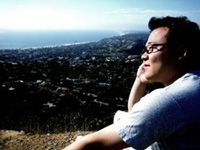
"...Sung Hong has written a wonderful string quartet that mixes the sad warmth of barber with darker shades of Shostakovich. It culminates in a bitterly brilliant, propulsive finale ..."
-from the New Yorker, Alex Ross
Sung J. Hong was born in Seoul, Korea, studied music in Paris and Los Angeles. He is now a bachelor's degree candidate at Manhattan School of Music. He has studied composition with Hojun Lee, Giampaolo Bracali, and he is now studying with Richard Danelpour.
His music has been performed in both Los Angeles and New York with various players and ensembles such as the Claremont Ensemble, the Manhattan Composers' Orchestra, Manhattan Chamber Ensemble, and Virtuoso Artists.
His recent awards have included the Pasadena Arts council Composition Award, the 2001/2002 OMC scholarships, and the Claremont Prize at Manhattan School of Music.
"Bell Flower" for piano solo. This piano piece is based on a theme from a Korean folk tune "Bell Flower" or "Doraji". The piece also includes rhythms from Korean "PungMul Nori". This piece attempts a musical recollection to make Korean folk tune and rhythm materials into a piano music.
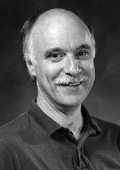
David Evan Jones is a composer of instrumental, vocal, and electronic music and a theorist writing about relationships between phonetics and music. In 1980-81, he was Composer-in-Residence at the University of York, England. He has subsequently taught at Dartmouth College and now at the University of California Santa Cruz. He has composed in residence at the Elektronmusikstudion, Stockholm and at L'Institut de Recherche et de Coordination Acoustique/Musique (IRCAM), Paris.
Jones' works have been recognized by grants from the National Endowment for the Arts, the California Arts Council, and the New Hampshire Arts Council, and by an invitation to present two full concerts of his works at the Festival d'Automne in Paris. He has been awarded first prize in the Premio Ancona International Composition Competition ( Italy, 1983) and first prize in the competition sponsored by the American New Music Consortium (New York, 1985).
His articles have appeared in Perspectives of New Music, Computer Music Journal, Electro-Acoustic Music, and Ex Tempore. Jones' competitions appear on compact disks from Wergo Records, Contemporary Recording Studios (Broomall, PA), Musical Heritage, Centaur Records, Capstone Records, and Composers' Recordings Inc. (New York). His latest CD, New-Balkan Jazz and Concert Music, was recently released by Centaur Records.
Jones' first chamber opera, Bardos, was staged in Seoul by the Seoul Contemporary Opera Company in march 2004. He is currently at work on his third chamber opera.
"Eemulnori: Memory and Reflection" for violin and piano was inspired by the Samulnori (사물놀이) tradition and composed as a gesture of respect for the spirit and musical sophistication of traditional Samulnori performers.
As the title suggests, Eemulnori is in two sections. Each half remembers and develops a specific rhythmic cycle from the Samulnori performance on the compact disk set from the National Center for Korean Traditional Performing Arts.
The first rhythmic cycle is from the familiar opening of the Samulnori performance. The entire first half of Eemulnori can be thought of as a series of variations on this theme. The rhythmic theme is stated clearly by the piano in bars 1-21. The violin takes the rhythmic theme in bars 22-42. The rhythmic theme is presented in a series of canons (with an added "free" voice) in the third variation that begins in bar 43. As can be seen from the score, the variations progress gradually in complexity. The fourth and last variation (bar 65) maintains a modified version of the phrase structure of the rhythmic cycle but obscures the original rhythm.
The second half of Eemulnori is based upon a faster rhythmic cycle (a condensed variation of the original cycle from the same Samulnori performance). The theme of the second-half of Eemulnori (bars 84-87) is based upon the subdivisions of this four-bar rhythmic cycle. The original Samulnori rhythm is stated clearly only near the end of Eemulnori at a tempo and in a manner intended to recall the excitement at the end of a Samulnori performance.
In Eemulnori, the two "objects’ played are not only instruments but rhythmic themes and emotional concepts ("memory and reflection"). The form of "play" concerns memory and change: the first half begins with a clear Samulnori rhythm and gradually diverges from it. The second half begins rather far away from the fast Samulnori rhythm but returns to it more literally at the end of the piece.
The difficulty of the piece is primarily in the Samulnori rhythms themselves. Some accommodations of parts can be made if necessary to make the piece more easily playable by students.
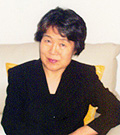
Professor, College of Music, the Sungshin Women’s University at Seoul, Korea.
Soonmee Kahng received her BM at the Ewha Women’s University, MM at the Manhattan School of Music, and PhD at the Michigan State University.
She composed "Arirang Fantasy for Violin solo", one of the required pieces for the 2004 Sejong Music Competition.
"Petite Suite for Cello Solo"
I. The Ring around the moon (Dalmuri),
II. Ut-mori game,
III. The Yearning (Dong Gyung),
IV. Dal ah, dal ah
This piece is based on the Korean folk tune "Dal Ah, Dal Ah," a song for the moon.
In the first movement, the slow tempo and double stops are used to describe the beautiful ring around the moon.
In the second movement, a typical Korean rhythmic pattern called the ut-mori jang-dan is used with the fragments of the melody. The formation of the rhythmic figure of ut-mori jang-dan is a consistent ten beats; on the accented eighth beat, the player regularly strikes the rim of a changgu (Korean drum).
The third movement represents the yearning for a moonlight voyage using somewhat abstract Eastern rhythmic patterns and styles.
The main melody of "Dal Ah, Dal Ah" is repeated in the fourth movement with melodic rhythmic variations.
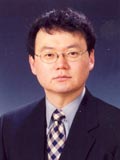
Composer.
Lecturer, Joong-Ang University, Seoul, Korea.
Grand prize winner of the KBS Music Composition Competition, Grand prize winner of the Best Musical.
"Chang-gu nori" for piano solo.
This music is based on the traditional Korean p'ungmul nori rhythms, gilgunak chilchae and madang ilchae.
This piece is an interpretation of traditional percussion rhythms into a work for solo piano. The slower middle segment consists of a melody derived from the Korean folk tune "Ihm-sil-gun, bang-ah ta-ryung" from the Iksan region of the Chunbuk province, consisting of a "pyung-jo" melody.
The dynamic rhythm and beautiful melodies of Korean folk music were incorporated into this piano music.
(Translator's note: P'ungmul nori is one of the oldest and most popular facets of musical culture from Korea, consisting of an ensemble of traditional Korean percussion instruments called p'ungmul. Heavily emphasising rhythms and performed with a high level of energy, p'ungmul nori is traditionally associated with the agrarian lifestyle and culture of Korean farmers and peasants from around the early Joseon Dynasty (1392-1910), opposed to music performed in the royal courts for nobility and intellectuals at the time.)